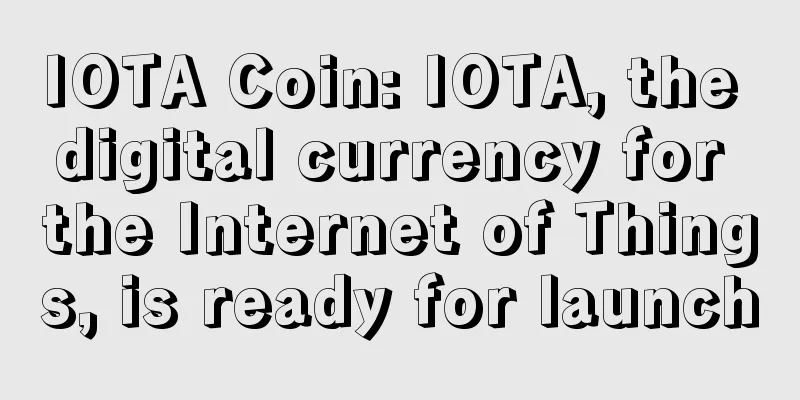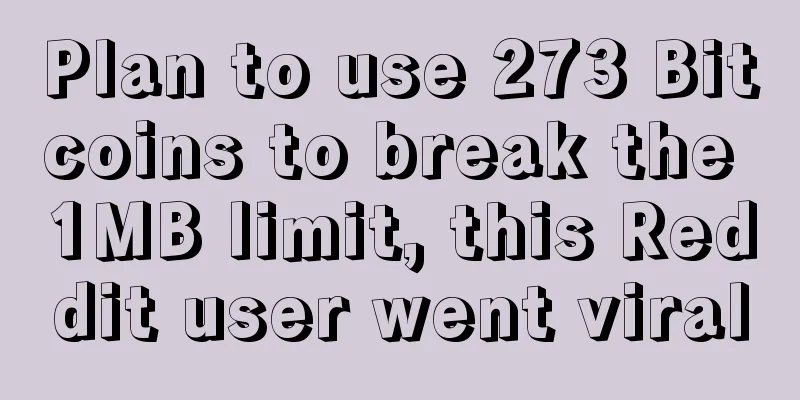From giving up to really buying it: The mystery of Ethereum’s development behind Three Arrows Capital’s reversal of attitude

|
Author | Liang Wenhui On November 20, Zhu Su, co-founder of Three Arrows Capital, tweeted that he would abandon Ethereum due to dissatisfaction with Ethereum's high GAS fees. They believed that Ethereum's high transaction fees were no longer suitable for new users to join. However, on December 7, Three Arrows Capital transferred out 91,477 ETH (worth about US$400 million) from major trading platforms. Zhu Su said that his previous words were too radical and he would buy more Ethereum in the future. Two extreme statements within a month are puzzling, but it is worth noting that the Three Arrows Capital team has indeed begun to deploy other public chains. Zhu Su believes that there are more public chain solutions with better performance than Ethereum, such as Solana, Avalanche (AVAX), etc. From this series of actions, we can see that many people’s patience with Ethereum is decreasing. Perhaps there is not much time left for it… How expensive is Ethereum GAS fee?In August 2020, a transaction on the Uniswap platform consumed approximately $3 to $10 in GAS fees. Some time ago, the average transaction fee was as high as $90, an increase of nearly 10 times. The increase in GAS fees is mainly due to the increase in GAS unit price and the continued rise in Ethereum prices. This year, the average daily gas price of Ethereum has continued to increase. On November 26, the average daily gas price surged to 600Gwei, setting a new high for the year. (Gwei is the unit of gas fee, 1ETH = 10⁹ Gwei) Usually, a single Ethereum transfer consumes a fixed amount of 21,000 GAS, plus a floating amount (depending on the length of the transaction information). In other words, even without the floating amount of GAS, facing such a high gas price, based on the time I observed, the transaction amount can reach about $55. Ethereum's gas fee remains high. In addition to the huge demand that leads to network congestion, it is also related to the increase in Ethereum prices. At the beginning of September last year, the average daily gas fee of Ethereum reached 514Gwei. Although it also hit the highest point since 2017, considering that the price of ETH was only US$480 at the time, the gas fee was not as high as it is today. No wonder Zhu Su of Three Arrows Capital resolutely decided to abandon the Ethereum ecosystem, because the high transaction fees are likely to cause the Ethereum community to lose transactions and users to other platforms. Layer2: The short-term optimal solution to efficiency and fee issuesLayer2 is a scaling solution for Ethereum 2.0. It is equivalent to creating a second layer of Ethereum network to handle excess transactions on the Ethereum main network as a supplementary layer. Through Layer2, some transactions can be processed at the Layer2 layer, which can reduce the pressure on the main network and indirectly speed up the processing speed. Ideally, the processing capacity will be increased from the current 15 to 45 transactions per second to 1,500 to 4,000 transactions per second. On the other hand, it is natural to reduce the transaction fee for a single transaction. The lower renewal rate is expected to attract more transactions to migrate from other main networks to Ethereum, thereby ensuring that the revenue of the entire network after the upgrade is higher than the current level. In the plan to achieve the expansion goal, there is actually more than one route, Layer2, there are also multi-chain and sidechain routes, but considering the comprehensive security and degree of decentralization, Layer2 is a more mainstream implementation path. There are also many competing solutions for implementing Layer 2. At present, ZK-rollup, which combines security and privacy, seems to be a better technical choice. Vitalik also stated in an AMA at the beginning of this year that ZK-rollup is a more reasonable choice in the long run because it is more reliable in ensuring the security of assets and applications. In the short term, Layer 2 is a better solution to the high transaction fees, but in the long term it still needs to be combined with sharding to achieve the goal of improving performance. Is there a specific timetable for the transition from PoW to PoS?The complete switch to PoS is an important milestone in the ETH2.0 upgrade, and it is too early at present. Now, the Beacon Chain has been launched, which means that the first step of switching the consensus mechanism has essentially been achieved. The Beacon Chain is a public chain based on PoS, which is completely independent of the Ethereum mainnet. It is planned to completely introduce PoS into Ethereum by merging it into the mainnet in the next step. When the merger is successful, the current mainnet ETH will no longer run, and will be replaced by the beacon chain ETH2. However, since there are so many Ethereum mainnet nodes, it will take a very long time to coordinate the transition of all nodes from PoW to PoS. After the merger of the main network and Beacon Chain is completed, the last stage will be sharding, but the premise is the stable operation after the merger. The purpose of sharding is to increase the processing speed, similar to splitting the database horizontally to avoid single-point network congestion. However, sharding is still in the research stage. The team estimates that it may be implemented in 2023, but the specific time depends entirely on whether the merger is effective. What do industry insiders think?
Synthetix is a synthetic asset protocol project on the Ethereum chain. Kain is firmly optimistic that Layer2 can solve Ethereum’s shortcomings and is a solution suitable for Ethereum’s continued long-term development. Therefore, in a tweet on November 21, he implicitly mocked some of Ethereum's early investors, saying that they had become speculators, which made him disappointed. He said that these were people in the industry that he used to respect very much, but now they choose to become short-termists in order to pursue profits. But he also believes that these people will return to the Ethereum ecosystem again due to the success of Ethereum Layer2. What he may be criticizing is that Three Arrows Capital's abandonment of Ethereum is undoubtedly speculative.
Adams, the father of Uniswap, believes that Three Arrows Capital has insulted all those who have worked hard for Ethereum 2.0 and Layer2. Adams believes that Ethereum can solve performance problems through Layer2 upgrades, and that patience is necessary if Ethereum is to develop conscientiously.
Chris is one of the earliest Wall Street investors to raise the issue of crypto asset valuation. He said he is optimistic about Ethereum because although Ethereum's transaction fees are more expensive than other Layer1s, it also has far more users than other Layer1s and has a mature ecosystem and community. Although other Layer1s are cheap, they also have very few users and do not have a mature development blueprint like Ethereum. summaryEthereum faces many challenges in upgrading, including challenges from performance upgrades, challenges from transition adjustments to the consensus mechanism, challenges from the need to reduce fees, and challenges from whether the economic model is feasible. As Vitalik himself has predicted, it may take about 6 years to fully realize the upgrade. Although progress is slow at present, through the efforts of the community, the first phase of switching to PoS has been successfully achieved. In terms of capacity expansion, in the short term, capacity expansion through Layer2 is the most ideal solution. However, after all, ROLLUP cannot completely place all transactions in Layer2. Some transactions still need to be processed in Layer1. The overall performance still cannot meet the needs of a larger concurrency. Therefore, from a longer-term perspective, sharding is necessary. From the perspective of sustainable development, switching to POS is the strategic value of Ethereum, and the realization of other modules is only a matter of time. |
<<: What is Web3 and why should you care?
Recommend
Huobi has stopped registering new users from mainland China
According to Wu Blockchain, the country/region se...
Why do people with moles on their chins have a hard life?
No matter what it is, as long as it is bitter, no...
Litecoin Activates Taproot Upgrade
On March 18, Litecoin officially released the Cor...
What does it mean when eyebrows are far from eyes?
Eyebrows are located on the brow bone and are a b...
What kind of waist shape women are blessed
1. Thin waist In physiognomy, if a woman has a th...
What is the personality of a person with a narrow forehead? Personality analysis of men with narrow foreheads
Different people have different personalities, an...
2016 China Financial Innovation Forum focuses on supply-side financial reform - hotly discusses blockchain development
On September 7-8, the "2016 China Financial ...
Men with messy eyebrows can have good fortune if they decorate their home like this
If a person's face is not very good, then he ...
How to tell when to get married by palmistry
When a person will enter the palace of marriage c...
What kind of child has the appearance of an emperor and a round forehead?
You can tell a person's destiny from the way ...
Workplace troublemaker, this kind of face is difficult to succeed in the workplace
Troublemakers in the workplace are usually very s...
How to tell whether a man is good or bad by looking at his face
Every woman wants to marry a good man, so in phys...
Russia plans to legalize Bitcoin, but government will collect transaction data
The Russian government reportedly plans to define...
How to prevent two drooping wrinkles at the corners of the mouth
The eight-character lines are what we usually cal...
A woman with great virtue will have a prosperous and smooth life.
Women with great Yin virtue are often people with...









